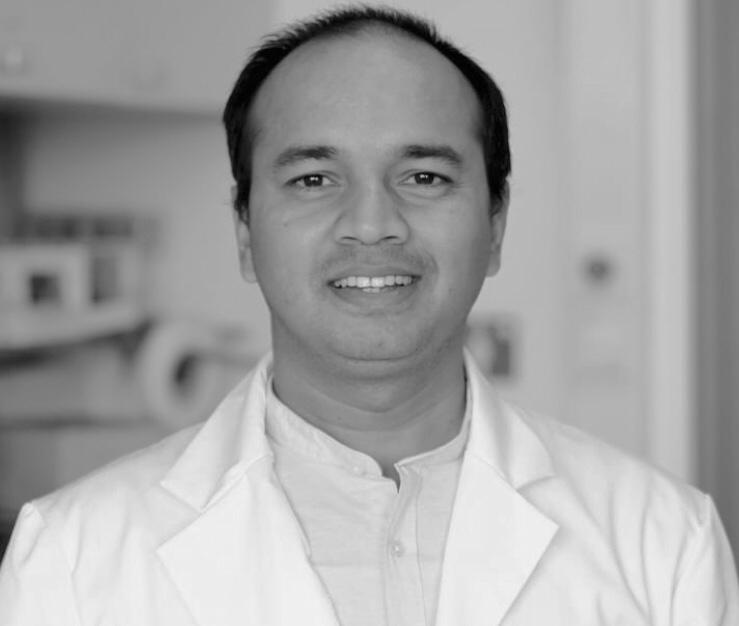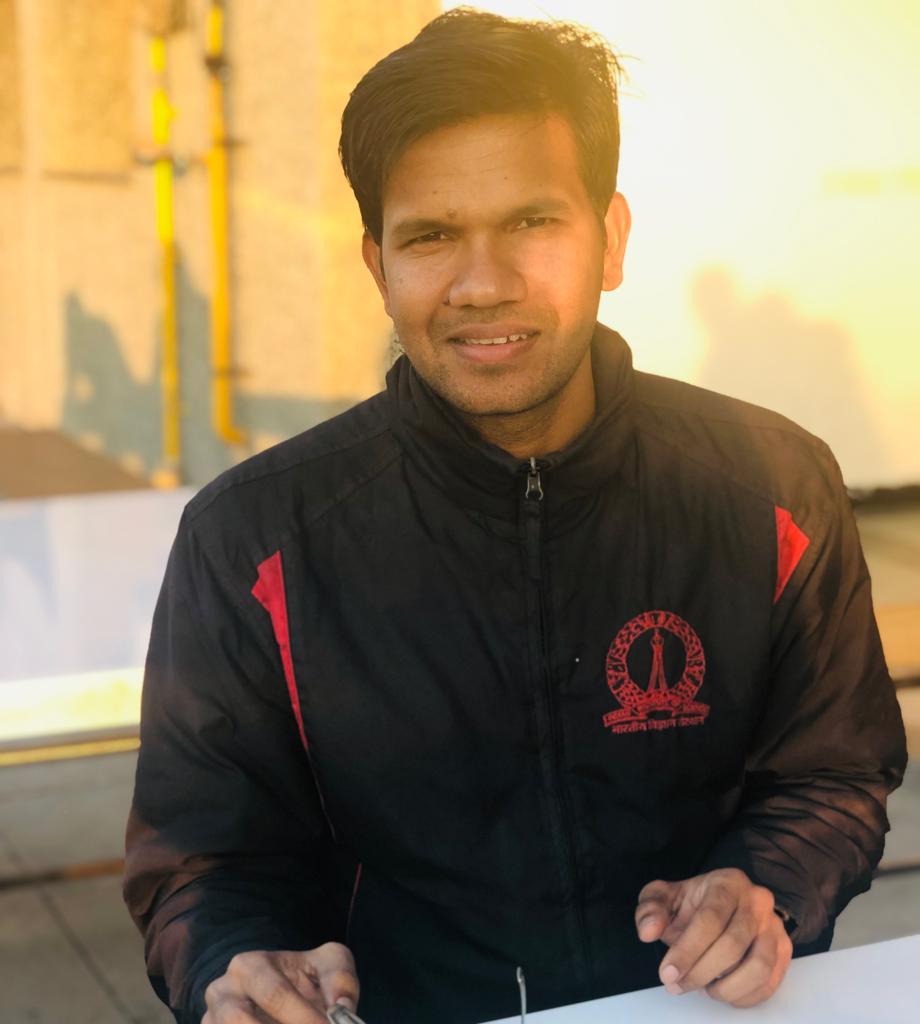NEW DELHI :

This is the twelfth part of the series called “Scientist Says”, where we bring for our readers the significant research works of young scientists.
Dr. Mohammad Rehan completed his M.Sc. in Organic Chemistry (2010) from Jamia Millia Islamia University, New Delhi. Dr. Rehan started his doctoral studies at Indian Institute of Science Education and Research (IISER) Bhopal in 2011 with Prof. Prasanta Ghorai. During his doctoral studies, he worked on transition-metal catalyzed and transition metal-free synthesis of heterocycles & carbocyclic molecules. In 2017, he obtained his Ph.D. in chemistry from IISER, Bhopal, India. He joined as a postdoctoral research fellow in the group of Prof. H. Waldmann Max Planck Institute of Molecular Physiology, Dortmund, Germany, in May 2018 and worked till January 2021. He worked with the Group Leader Dr. Kamal Kumar, in the group of Prof. Waldmann, on asymmetric hetero-Diels–Alder reactions leading to biologically intriguing small molecules. He shares his research works with Rashida Bakait of India Tomorrow. Here are the excerpts of the interview.
Q. Please briefly explain your research.
Ans. My initial research was based on the development of synthetic methodology towards the synthesis of heterocyclic molecules and carbocyclic molecules. The purpose of developing a new synthetic methodology for the synthesis of heterocyclic molecules is that most marketed drugs contain heterocyclic fragments. Heteroatom’s (such as nitrogen, oxygen and sulfur) as well as heterocyclic scaffolds are often present as a key structural unit in several active pharmaceuticals natural products. Heterocyclic scaffolds are frequently present molecules in medicinal chemistry and among all such heteroclic molecules, nitrogen containing heterocyclic molecules are of great importance to medical science. Since nitrogen containing heterocyclic molecules are abundant in nature, existing as key units in several natural products, for examples, antibiotics, hormones and in vitamins. Nitrogen-containing natural products and some alkaloids compounds, showing various biological activities, several of them are even prescribed drugs such as serotonin, thiamine, which are called vitamin B1, papaverine, coniine, caffeine, nicotine, atropine, notorious morphine, and codeine. Statistically, more than 85% of all biologically active compounds contain heterocyclic moiety. These facts disclose and emphasize heterocyclic fragments play a central role in modern drug design and drug discovery.
At IISER-Bhopal, my doctoral research began with the development of a new synthetic method for the synthesis of heterocyclic molecules and their application towards the synthesis of biologically active compounds. It was divided into two section: 1st section (1) transition-metal catalyzed synthesis of heterocyclic compounds (such as synthesis of 2-benzyl indole and 2-benzyl benzofuran derivatives) here the developed method was used towards the synthesis of melatonin receptor, anti-tumor and hypocholesterolemic agent, cytotoxic and mTOR signaling agent. In the second section (2) (a) transition-metal free synthesis of heterocyclic (such as derivatives of quinoline derivatives) with this develop methodology I have successfully synthesized 2-styrylquinolines (which shows combined therapeutic and diagnostic activities against Alzheimer’s and prion diseases). The 2- styrylquinolines is a vital scaffold and having considerable biological significance.
Besides the above-mentioned research, my research focus as a postdoctoral research fellow at Planck Institute of Molecular Physiology, Dortmund, Germany, was based on (a) asymmetric hetero-Diels–Alder reactions leading to biologically intriguing small molecules (here I have developed a synthetic methodology that enabled us to identify a new biological annotation to piperidinoyl spirooxindoles, which were known to exhibit inhibition of p53-MDM2 interaction. This work also demonstrates how important it is to develop methods for various possible stereoisomers of a desired product with stereogenic centers), and (b) synthesis of bio-inspired Pseudo-natural products (PNPs).
Q. What was the objective of your research?
Ans. During my doctoral studies, I have gained immense experience in the development of new synthetic methodology. So I decided to extend my expertise towards drug discovery. It is only possible when there is a combination of chemistry and biology. I was looking for the research team where chemistry and biology work is going simultaneously, then only you can understand the real significance of the developed methodology for synthetic molecules. The scientific discipline of chemical biology is spanning the fields of chemistry and biology. It involves the application of chemical techniques, analysis, and often small molecules produced through synthetic chemistry to the study and manipulation of biological systems. When I joined the Prof. Waldmann research group (Prof. Waldmann is one of the renowned names in the field of chemical biology all over the world in academia and the pharmaceuticals industry) at MPI-Dortmund, my interest has developed to design and synthesize the Psuedo natural product based Molecular library towards the drug discovery. The synthesis of spiro-oxindole scaffold is present in various biologically intriguing natural products endowed with different biological activities. For example, Spirotryprostatin is isolated from the fermentation broth of A. fumigatus and shows antimitotic activity. Another natural product with spiro-oxindole core is Welwitindolinone which is isolated from H. welwitschii and reverses the effect of P-glycoprotein mediated multiple-drug-resistance. There are also various synthetic examples known where spiro-oxindoles show therapeutic effects, for instance, the antimalarial NITD609. An interesting subgroup of this class is the piperidinoyl-spirooxindole which consists of up to four consecutive chiral centers and up to three all-carbon-quaternary centers. Synthetic derivatives of this compound class appear to be promising anticancer agents. They inhibit the protein-protein interaction between the tumor suppressor p53 and MDM2. However, their potential in modulating other biological functions is not yet explored.
Till date, there are some enantioselective HDA reactions reported with great control over their stereo chemical courses. They are applied for the total synthesis of natural products and used in the synthesis of small molecules. Our aim was to develop asymmetric access to 3,3’-piperidinoyl-spirooxindoles employing a catalytic HDA reaction with a 2-azabutadiene.
Q. Please mention some of the new findings of your research?
Ans.The aim of chemical biology research is to get deeper insights into various known as well as novel biological processes by using chemical tools and techniques. An approach that is often chosen to accomplish this is to perturb a biological process that can be achieved with genetic approaches like gene silencing. The application of small molecules and the term small molecule is widely used and usually defines a molecular entity with a molecular weight under 1000 g/mol. Some of the important features of small molecules are their physicochemical properties like their permeability and solubility to penetrate the cell membrane and diffuse to their biological target in cell-based screenings. These properties are mainly influenced by molecular weight, lipophilicity, and the number of hydrogen bond donors and acceptors. So the design and development of synthetically small molecular libraries are very important in modern drug discovery.
Q What kind of challenges did you face?
Ans. Research is a lengthy process, so one must be self- motivated and should have a deep interest in the respective research areas. It will never be a cakewalk, your success will come after failure. Honestly, failure takes you towards success as you come to know various techniques and methods that might lead to failure. When I started my research for the development of a new synthetic methodology in chemistry I have faced similar problems.
Q. When did you begin and complete your research?
Ans. I started working as a doctoral researcher in August 2011 and successfully completed my Ph.D. degree in 2017. Then, I worked as a postdoctoral research fellow from May 2018 to January 2021 at Max Planck Institute of Molecular Physiology Dortmund Germany in the field of chemical biology. After the completion of my first post-doc, I took some break from my research work writing some reviews and research projects, now I want to start my own research group or would like to join the pharmaceutical industry to learn more about drug discovery.
Q. Any scholarships or awards for research?
Ans. For my doctoral studies, I received a fellowship from MHRD-CSIR-UGC for 5 years. During my postdoctoral research, I received Max Planck Institute-Gesellschaft Germany Postdoctoral fellowship for the Postdoctoral research in Max-Planck Institute of Molecular Physiology Dortmund Germany.
Q. How do you think your research would be beneficial to the industry or society?
Ans. Several decades of research in various fields by the scientific community have led us to where we human beings are today: a civilized society with the knowledge and instruments to move forward. I believe that the synthetic methodology which I have developed during my doctoral studies in the area of organic chemistry and the research work during my postdoc will be helpful for the pharmaceuticals industry. By using such synthetic methodology the pharmaceuticals industry can develop new drugs. In the modern drug discovery we need to make an economically, environmentally sustainable and easily accessible method to provide the drugs in the market for the benefit the society.
Q. Any new research you are planning to work on now?
Ans. Now , I would like to expand my research area on biocatalyst to develop new chemical transformation towards the drug discovery. Biocatalysis refers to the use of living systems or their parts to speed up (catalyze) chemical reactions. In biocatalytic processes, natural catalysts, such as enzymes, perform chemical transformations on organic compounds. In a class of catalysts of biocatalyst enzymes are accountable for the smooth transformation and enhancement of the rate of many crucial biochemical reactions in plants and animals. Nature is making biologically active compounds in plants via enzyme catalysis process from a longer time. The importance of enzyme catalyst is due to its efficiency, as a single molecule of the enzyme catalyst can convert up to a million of reactant molecules into the products in few seconds. Recent advances in the field of drug discovery helps the chemist to understand the structure and functional activities of enzymes, which have in turn led to an increase in their stability, activity, sustainability, and substrate specificity. At present, there are hundreds of different biocatalytic action that have been carried out in many pharmaceuticals, chemical, food, and agro-based industries (biocatalysis Tyler Johannes).
Q. Please give few tips and suggestions for the budding scientists.
Ans. Doctoral research sometimes can be highly frustrating. At that time researcher should try to develop his own self-confidence and self-belief. Seek positive feedback and acknowledge your achievements. If your lack of determination is actively affecting your strength to work then seek consultation and professional help. Time management is very crucial. If you are not executing your goals on time, then plan properly again. And in the end don’t fear failure you can learn more from your failures than achievements. Failure can bring a positive change in your personal and professional life. Never take it personally, remember that you are receiving training to be a scientist. Try to understand the expectations of your supervisor.
Finally, you may need to explain your busy schedule during your research work to your family and friends. They may not understand the magnitude of research studies. You shouldn’t be nervous and don’t try to reject any opportunity to get-together. Remember one thing that discussing your research work with a layman can help to brush up it and it will further boost your motivation.
source: http://www.indiatomorrow.net / India Tomorrow / Home> Education> Featured / by Rashida Bakait, India Tomorrow /June 15th, 2021











